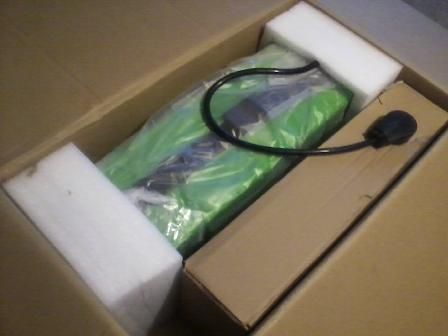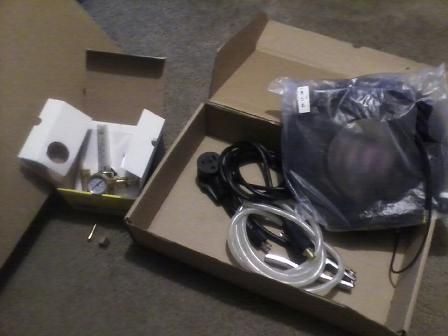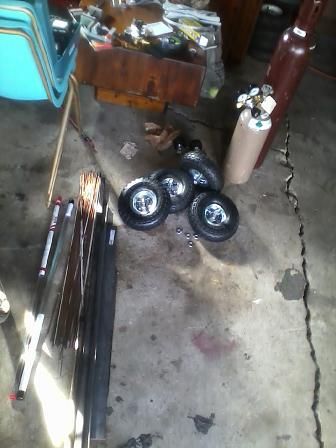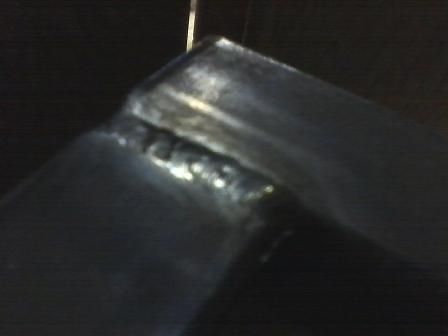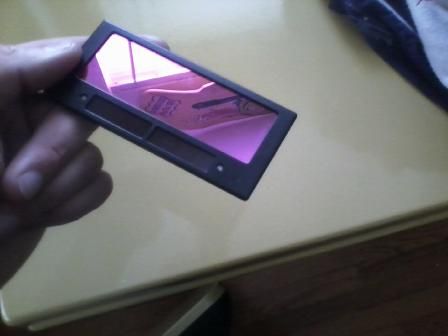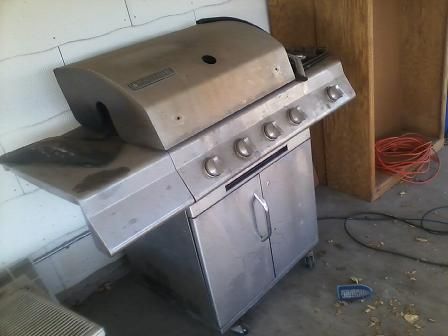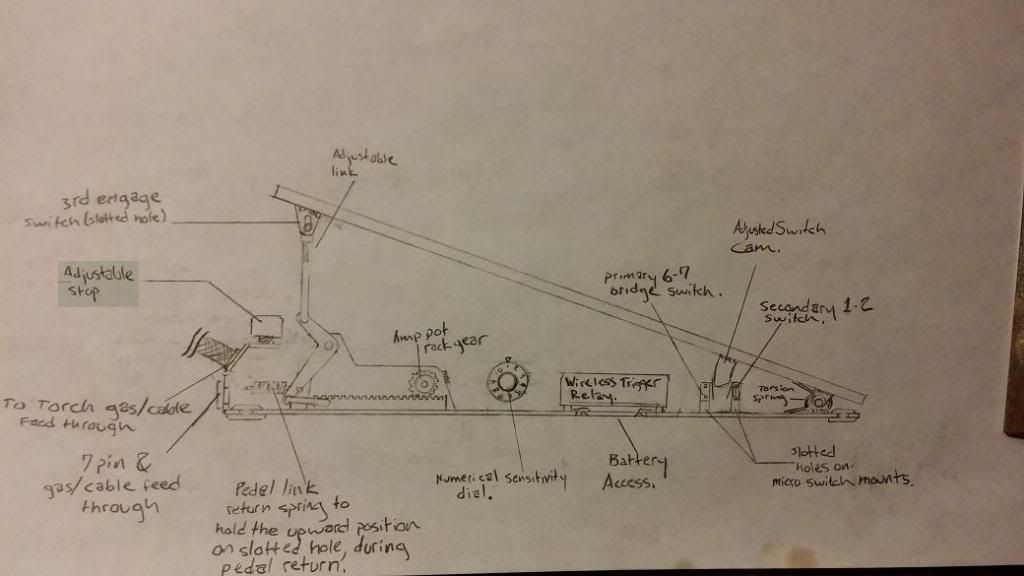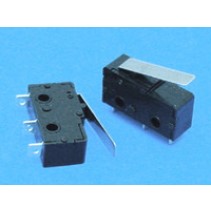DaveBonds
Garage Trash
I use MIG welders all day. I've used them on everything, from frame work to 20ga sheet metal and they work great and I will continue to use them for niche projects, like framing, some sheet metal and odd access areas.
I've been wanting a TIG welder for some time, now, to accomplish things on my cars and with other art and furniture projects that I've been wanting to venture in, but couldn't because of the limited capabilities of a MIG.
I did a lot of research and after considering several different machines, including Lincoln and Miller brands, I decided to go with an Everlast 185 amp AC/DC unit that is dual voltage capable 115/220, depending on work load.
[ame="http://www.amazon.com/Everlast-Powertig-185-Inverter-based-Voltage/dp/B00AWU739O/ref=sr_1_3?ie=UTF8&qid=1391919472&sr=8-3&keywords=Everlast+185"]2013 Everlast Powertig 185 Micro Ac Dc Tig Stick Welder 110/220 Volt Inverter-based Ac Dc Dual Voltage 185AMP - Amazon.com[/ame]

This welder is a square wave inverter, so it's significantly lighter than a transformer TIG and uses less energy to accomplish the same thing.
The reason I went with this welder, is because of it's duity cycle capability for my projects, coupled with the ability to run 220 that I'd like to on occasion for larger fabrication.
The wall that I ran into with most newer TIG machines, is that the ones that were not locked in at 60Hz frequency, had digital settings that you had to play with, for pre-set metal thickness and metal heat range/ type.
I like having full control over a welder like this, because of how much I will be criticizing the welds and their cleanliness, for it's use. Most of the analog control welders that were inherently cheaper had a slew of control capability, but they were for settings that I will never use, like 4 knobs for weld pulsing time controls. I'm not going to be running this thing all day on a production line and I do my own beads, so the automated stuff just seemed like money spent on crap I won't use.
I almost bought another welder, but it was locked at 60Hz, which is a reasonable setting for all around welding, but it's not as focused as I'd like for some of the stuff I'll be using this welder for, like cast aluminum.
a TIG welder (Tungsten Inert Gas) is essentially just the same as gas/ torch welding, with a much more controlled heat source. The heat source works like a multiple spark ignition box, to create a heat source to melt the metal and filler rod into. It's not a constant arc of electricity, like an ARC welder. The frequency of that spark at 60Hz is suitable for steel and some aluminum uses, but with higher frequencies, around 100Hz, the smaller the spark arcing pattern/ area becomes, so you have more control over the heat range.
This welder has extremely basic controls for amperage, AC frequency and AC balance, for helping with the cleaning cycle that the torch goes through, during the process. This is critical for a good aluminum weld, because aluminum oxide that is on all aluminum is much harder than the core metal that has not oxidized, so the direction of the current on AC needs to have more coming from the back side up to the Tungsten tip of the torch, for penetrating and cleaning the aluminum as the downward portion of the AC cycle heats the surface metal for the weld.
I think the first thing I'm going to build with it is an aluminum cart for it, but this is really going to help cut down on metal finishing time for my sheet metal fabrication work. which is one of the primary reasons why I picked it up, aside from building intakes and exhaust systems.
The next two things I'm going after, this year, are a vacuum table and a good pump and a small shop press/ mill/ lathe. I wanna make some stuff.
I've been wanting a TIG welder for some time, now, to accomplish things on my cars and with other art and furniture projects that I've been wanting to venture in, but couldn't because of the limited capabilities of a MIG.
I did a lot of research and after considering several different machines, including Lincoln and Miller brands, I decided to go with an Everlast 185 amp AC/DC unit that is dual voltage capable 115/220, depending on work load.
[ame="http://www.amazon.com/Everlast-Powertig-185-Inverter-based-Voltage/dp/B00AWU739O/ref=sr_1_3?ie=UTF8&qid=1391919472&sr=8-3&keywords=Everlast+185"]2013 Everlast Powertig 185 Micro Ac Dc Tig Stick Welder 110/220 Volt Inverter-based Ac Dc Dual Voltage 185AMP - Amazon.com[/ame]

This welder is a square wave inverter, so it's significantly lighter than a transformer TIG and uses less energy to accomplish the same thing.
The reason I went with this welder, is because of it's duity cycle capability for my projects, coupled with the ability to run 220 that I'd like to on occasion for larger fabrication.
The wall that I ran into with most newer TIG machines, is that the ones that were not locked in at 60Hz frequency, had digital settings that you had to play with, for pre-set metal thickness and metal heat range/ type.
I like having full control over a welder like this, because of how much I will be criticizing the welds and their cleanliness, for it's use. Most of the analog control welders that were inherently cheaper had a slew of control capability, but they were for settings that I will never use, like 4 knobs for weld pulsing time controls. I'm not going to be running this thing all day on a production line and I do my own beads, so the automated stuff just seemed like money spent on crap I won't use.
I almost bought another welder, but it was locked at 60Hz, which is a reasonable setting for all around welding, but it's not as focused as I'd like for some of the stuff I'll be using this welder for, like cast aluminum.
a TIG welder (Tungsten Inert Gas) is essentially just the same as gas/ torch welding, with a much more controlled heat source. The heat source works like a multiple spark ignition box, to create a heat source to melt the metal and filler rod into. It's not a constant arc of electricity, like an ARC welder. The frequency of that spark at 60Hz is suitable for steel and some aluminum uses, but with higher frequencies, around 100Hz, the smaller the spark arcing pattern/ area becomes, so you have more control over the heat range.
This welder has extremely basic controls for amperage, AC frequency and AC balance, for helping with the cleaning cycle that the torch goes through, during the process. This is critical for a good aluminum weld, because aluminum oxide that is on all aluminum is much harder than the core metal that has not oxidized, so the direction of the current on AC needs to have more coming from the back side up to the Tungsten tip of the torch, for penetrating and cleaning the aluminum as the downward portion of the AC cycle heats the surface metal for the weld.
I think the first thing I'm going to build with it is an aluminum cart for it, but this is really going to help cut down on metal finishing time for my sheet metal fabrication work. which is one of the primary reasons why I picked it up, aside from building intakes and exhaust systems.
The next two things I'm going after, this year, are a vacuum table and a good pump and a small shop press/ mill/ lathe. I wanna make some stuff.




